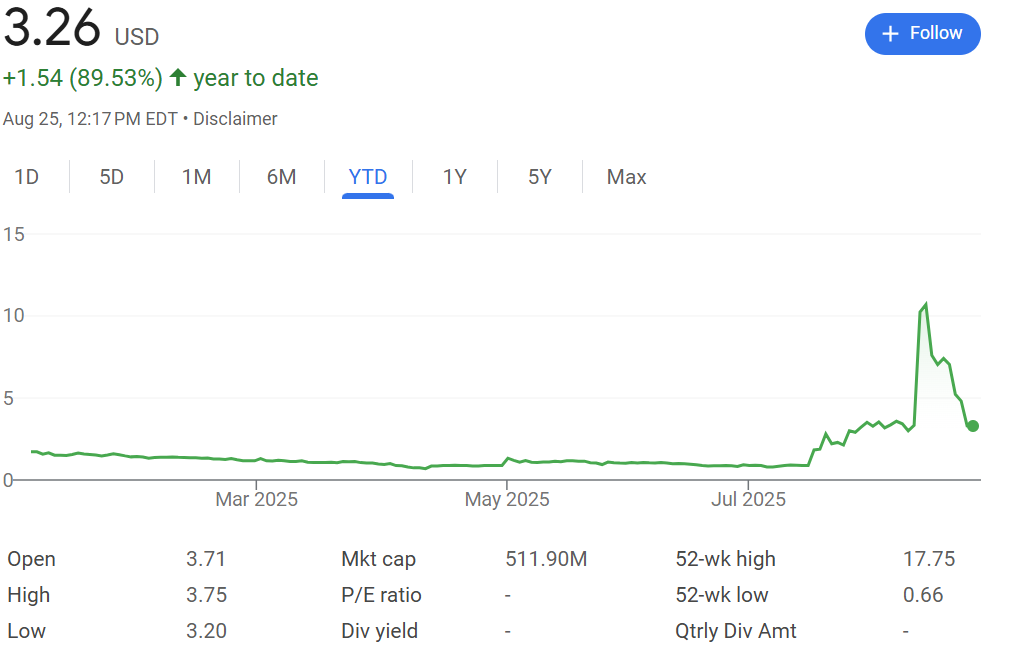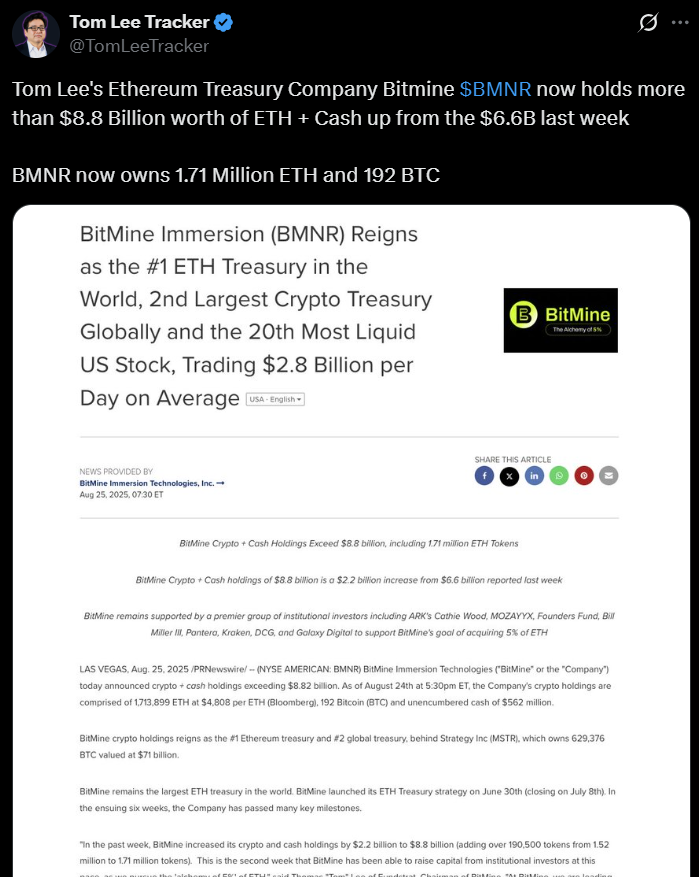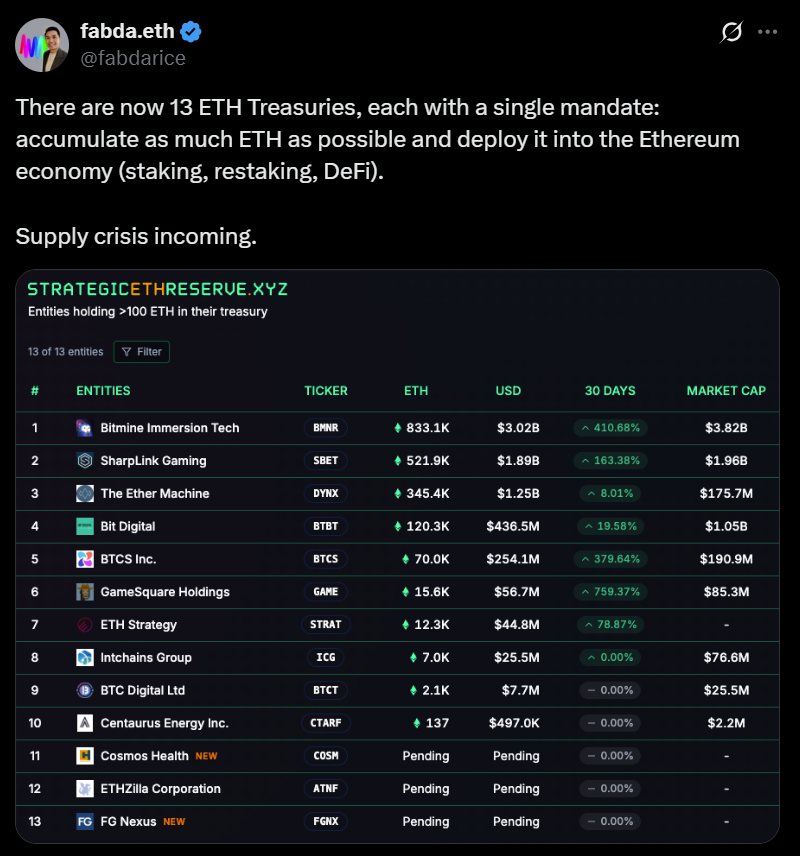ETHZilla buyback is a $250 million share repurchase approved after the company pivoted to an Ether treasury, signaling firms may tap crypto gains for liquidity; analysts warn that debt-financed crypto treasuries can amplify losses and create leverage-driven risks for shareholders and markets.
-
Key point: ETHZilla approved a $250M buyback after converting to an ETH treasury.
-
ETHZilla holds 102,237 ETH (acquired at ~$3,948.72) now worth roughly $489M at current prices.
-
Analysts warn overleveraging and concentration risk: crypto treasuries now hold ~3.4% of Ether supply according to Sentora Research.
ETHZilla buyback: $250M repurchase after ETH pivot — assess leverage risk and treasury exposure. Read expert analysis and next steps to evaluate treasury strategies.
ETHZilla’s $250 million buyback highlights how companies are tapping crypto gains for liquidity — but analysts warn that leverage risks could turn treasuries into ticking time bombs.
ETHZilla, previously 180 Life Sciences, has approved a $250 million stock buyback after repositioning as an Ether-focused treasury company. The move underscores a rising trend of firms using digital-asset gains to fund shareholder returns while raising fresh questions about balance-sheet risk.

ETHZilla’s stock price can clearly be seen benefiting from its new ETH treasury focus. Source: Google Finance
What is the ETHZilla buyback and why does it matter?
The ETHZilla buyback is a board-approved program to repurchase up to $250 million of outstanding common shares, reflecting a strategy shift after the company made Ether its core treasury asset. The repurchase matters because it signals corporate use of crypto gains for liquidity and highlights concentration and leverage risks for investors.
How did ETHZilla build its Ether treasury?
ETHZilla acquired 102,237 ETH at an average cost of $3,948.72, spending just over $403 million. At recent market levels those holdings are valued at about $489 million. Management said recent purchases will be staked with Electric Capital. The company has 165.4 million shares outstanding.
Management framed the buyback in standard terms — citing “market conditions,” “management discretion,” and “alternative uses of capital.” The repurchase follows the company’s rebrand and strategic pivot from biotechnology to an Ether treasury model.
How risky are crypto treasuries and what are the main threats?
Crypto treasuries carry two primary risks: leverage and concentration. Firms that borrow to accumulate crypto holdings face heightened vulnerability to price declines, which can trigger margin calls, forced asset sales, or cascading liquidations.
Mike Foy, chief financial officer at Amina Bank, cautioned that many crypto-treasury moves could be short-term share-price plays rather than durable strategic pivots. Kadan Stadelmann, CTO at Komodo Platform, noted benefits such as staking yields but warned that “overleveraging” could produce systemic stress in a downturn.

Source: Tom Lee Tracker
| Metric | Value |
|---|---|
| Authorized buyback | $250,000,000 |
| ETH acquired | 102,237 ETH |
| Average purchase price | $3,948.72 |
| Amount spent | ~$403,000,000 |
| Estimated current value | ~$489,000,000 |
| Shares outstanding | 165.4 million |
Why do companies adopt Ether treasuries?
Firms cite potential upside, staking yield and strategic alignment with decentralized finance as reasons to add Ether to the balance sheet. Spot treasury strategies can offer higher yields than traditional cash holdings and may support growth narratives for public companies with weak operating revenues.
Notable peers pursuing Ether accumulation include BitMine Immersion Technologies, The Ether Machine, SharpLink Gaming, Bit Digital and Ether Capital Corp., showing adoption across and beyond the digital-asset sector.

Source: Fabdarice
Frequently Asked Questions
How does a company’s crypto treasury affect shareholder risk?
A company’s crypto treasury increases market and liquidity risk; price drops can erode asset values and, if holdings are debt-financed, may trigger margin calls or dilution that harm shareholders.
Can staking make treasury strategies safer?
Staking can generate yield on holdings but does not eliminate price risk. Staked assets remain exposed to market volatility and potential protocol-specific risks.
How concentrated is Ether exposure among treasury firms?
According to Sentora Research (Anthony DeMartino), entities with Ether treasuries collectively hold roughly 3.4% of total ETH supply, creating measurable concentration and market-impact risk.
Key Takeaways
- ETHZilla buyback: $250M repurchase signals use of crypto gains for liquidity.
- Balance-sheet risk: Debt-financed crypto accumulation can lead to forced sales and cascading price effects.
- Investor action: Evaluate leverage, staking arrangements and disclosure when assessing treasury-led strategies.
Conclusion
ETHZilla’s $250 million buyback after its Ether pivot highlights growing corporate interest in crypto treasuries and the trade-offs between yield and risk. Investors should scrutinize leverage, transparency and long-term strategic intent. Watch treasury disclosures and market indicators closely as this trend evolves.
Published: 2025-08-25 · Updated: 2025-08-25 · Author: COINOTAG





